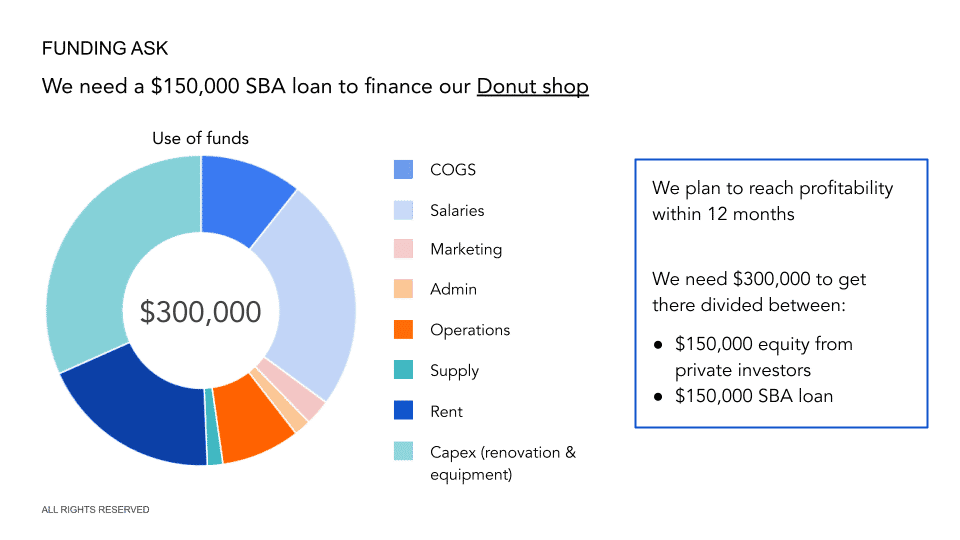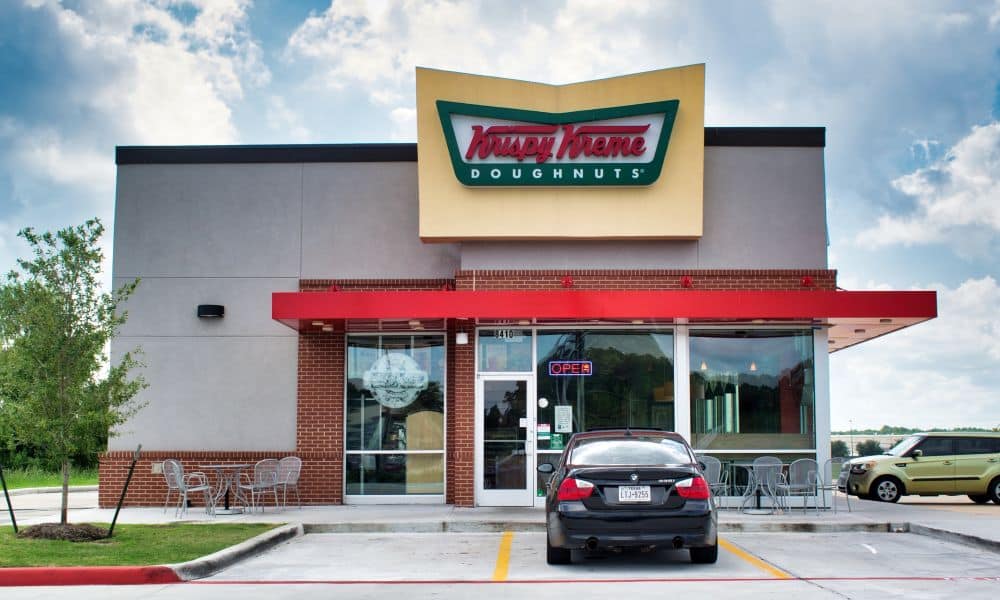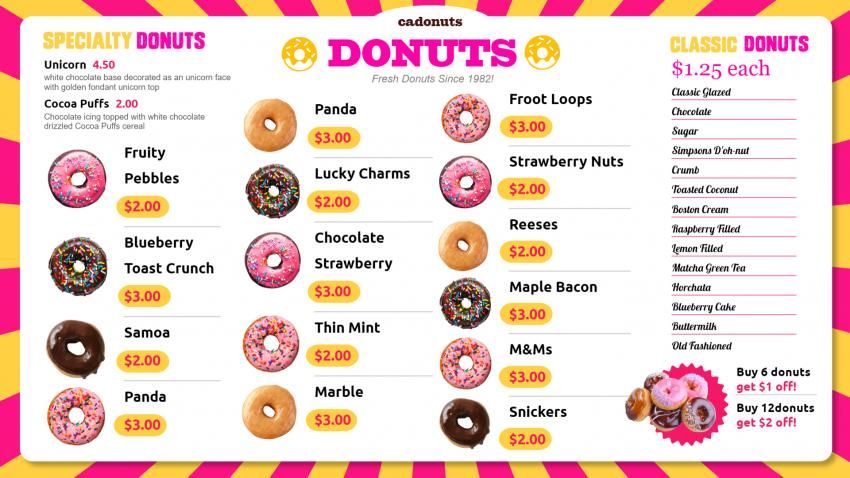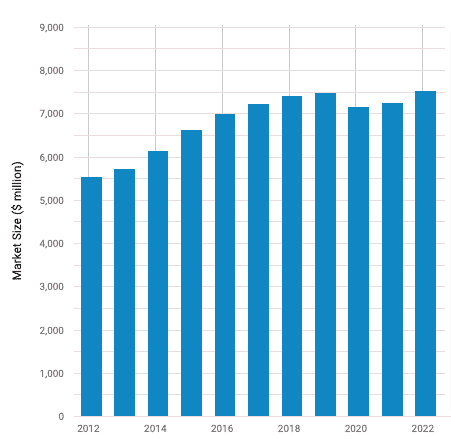Whether you’re looking to raise funding from private investors or to get a loan from a bank (like a SBA loan) for your donut shop, you will need to prepare a solid business plan.
In this article we go through, step-by-step, all the different sections you need in the business plan of your donut shop. Use this template to create a complete, clear and solid business plan that get you funded.
For more information on donut shops, make sure to read our guides below: How to Open a Donut Shop in 10 Steps How Much Does it Cost to Open a Donut Shop? How To Build a Financial Model For a Donut Shop
1. Executive Summary
The executive summary of a business plan gives a sneak peek of the information about your business plan to lenders and/or investors.
If the information you provide here is not concise, informative, and scannable, potential lenders and investors will lose interest.
Though the executive summary is the first and the most important section, it should normally be the last section you write because it will have the summary of different sections included in the entire plan.
Why do you need a business plan for a donut shop?
The purpose of a business plan is to secure funding through one of the following channels:
- Obtain bank financing or secure a loan from other lenders (such as a SBA loan)
- Obtain private investments from investment funds, angel investors, etc.
- Obtain a public or a private grant
How to write an executive summary for a donut shop?
Provide a precise and high-level summary of every section that you have included in the business plan of your donut shop business. The information and the data you include in this segment should grab the attention of potential investors and lenders immediately.
Also make sure that the executive summary doesn’t exceed 2 pages in total: it’s supposed to be a summary for investors and lenders who don’t have time to scroll through 40-50 pages, so keep it short and brief.
The executive summary usually consists of 5 major sub-sections:
- Business overview: start by introducing your donut shop, where it is located, the products you will sell, and the pricing strategy you want to implement. Mention what sets you apart from other businesses. For example, the area where you want to operate may have counter-only donut shops but there is enough demand for dine-in donut shops. You may want to fill in that gap.
- Market analysis: summarise the market where you will operate and provide a brief about your target market, target audience, spending capability, etc. Also give certain data points about the donut shop industry in the area where you want to operate (size and growth), as well as an overview of the main competitors, etc.
- People: introduce your donut shop’s management and employee structure. Provide a brief (no more than a couple of sentences each) of the knowledge and experience of the team. Also, mention how the company will be structured (management roles and reporting lines)
- Financial plan: how much profit and revenue do you expect in the next 5 years? When will you reach the break-even point and start making profits? You can include here a chart with your key financials (revenue, gross profit, net profit)
- Funding ask: what loan/investment/grant are you seeking? How much do you need? How long will this last?

2. Donut Shop Business Overview
In this segment of the business plan, you will provide details about the donut shop you want to open.
You must answer here some important questions that potential investors and lenders often ask about your business and operations. Here are some examples of questions you must answer:
- What is the rationale behind your opening a donut shop today?
- Where will you open your donut shop and why did you select that location?
- What type of food products will you sell through your donut shop, apart from donuts themselves (you may offer tea, coffee, other non-alcoholic beverages, snacks, etc.)?
- Will you offer certain specialized donut recipes that no one else offers?
- Will you have a sit-in area or is this takeaway only?
- What will be your pricing strategy and why?
- What will be the legal structure of your company?
a) History of the Project
Any business overview must start with explaining the history of the project. There are 2 components here:
- Passion & experience of the business owner
- Rationale behind starting a donut shop today
Passion & experience
You may or may not have prior experience. If you have experience, speak about it and how it will help you to run your business. For instance, you may have worked as a pastry chef or a bakery manager in of the leading donut businesses in the country for a decade.
Rationale
Is there a certain problem (or perhaps, a set of problems) that your donut shop will try to solve when it comes into existence? For example, the area where you want to operate may not have a full-service donut shop, or maybe, you will be the first to offer experimental donuts.
But that’s not all! The market must be suitable for a business to exist and thrive. For instance, if you are trying to open an experimental donut shop where people prefer the classics and aren’t open to experimentation, the business may not succeed.
Similarly, if you want to open a donut shop that offers pricey food in a low-income neighborhood, it may not be a very wise idea. People in such areas will rather go for cheaper alternatives than pricey products made with all-natural and organic ingredients.
The rationale behind your project must be backed up by a thorough analysis of the industry in the area where you plan to open your donut shop. This is what we will cover under Market Overview further below.

b) Business Model
This section of the Business Overview should explain the model you want to adopt for your donut shop. For example:
- Will you buy and remodel an existing donut shop, or will you have one built from the scratch?
- Where will your donut shop be located, and why did you select that location?
- Is this an independent or a franchise donut shop?
- What type of donut shop will you open (sit-in, takeout, truck, etc.)?
- What type of foods will you focus on?
- How will you price your food items and why?

What are the different types of donut shops?
Donut shops can have different formats. If you are focusing on a specific format or if you want to combine multiple formats in one, describe that. Here is a quick list of usual formats for donut shops:
- Donut bakery: they are no-frills donut shops where you get the classic flavors
- Experimental donut shops: these are the ones that will go for experimental donuts with creative toppings, flavors, and fillings
- Full-service donut shops: these can be classic or experimental donut shops with a dine-in setup. Apart from donuts, they can also offer other food and beverages
- Counter-only or takeout donut shops: these shops will not have any sitting arrangement. Customers need to purchase their products at the counter and leave. They may sell classic or experimental donuts along with other food items
- Donut trucks: these are essentially food trucks that sell donuts. Again, they too may sell experimental or classic donuts
You may go for any format. However, you are free to select a multi-format model such as a full-service donut shop plus a truck, or a counter-only donut shop plus a truck.
No matter what you select, you must ensure that there is enough demand for the type of donut shop you want to open and the type of food you want to offer.
c) Products
As a donut shop, you will be focusing on donuts. However, it is not necessary to stick to a single type of product. You can sell sandwiches, muffins, smoothies, etc.
Usually, donut shops have a limited menu and hence, you can include it in the business plan.
However, if there are too many products (for example, many types of donuts), you must include a sample menu highlighting the signature offerings of your business.

d) Pricing Strategy
Strategy
This is where you will provide an overview of your pricing strategy. For instance, you may charge higher than your competitors because you may be using all-natural and organic ingredients and raw materials.
Similarly, you can also charge higher because all donuts are prepared in-house instead of factory-made donuts that are mass produced.
Again, you may decide to charge lower for certain items than your competitors because the scale of your operations allows you to acquire discounted raw materials and you can pass over some profits to your customers in the form of a lower price range.
Pricing table
While it may not be possible to provide a proper pricing table for all products that you will offer, it is still a great idea to provide a table that gives an overview of your pricing structure.
You can provide an average price based on categories. For instance, you can do something like this:
- Individual donut: $1.90 – $2.50
- 4x donuts: $5.90 – $7.90
- 12x donuts: $15.90 – $22.90
- Coffee: $1.90 – $5.50
- Other drinks: $3.10 – $5.00
However, don’t go into extreme details because potential investors are not interested in the nitty-gritty of your pricing. They just need the big picture to assess the profitability: they will tie your pricing strategy with your financial projections later on.

e) Company Legal Structure
Finally, your business overview section should specify what type of business structure you want. Is this a corporation or a partnership (LLC)? Who are the investors? How much equity percentage do they own? Is there a Board of Directors? If so, whom? Do they have experience in the industry?
3. Donut Shop Market Overview
A complete understanding of the market where you want to operate is important for the success of your business. That’s also something you must showcase in your business plan.
For example, if you are in a location where people prefer to eat classics over experimental donuts, trying to push experimental donuts will not help.
Similarly, if people prefer takeaway-style shops, opening a dine-in-style donut shop will only increase your operational expenses and lead to losses.
Therefore, you must cover here 3 important areas:
- Industry Size & Growth: how big is the donut shop industry in your area? What is its growth rate (or decline rate) and what are the factors contributing to its growth or decline?
- Competition Overview: how many competitors are there? How do they compare vs. your business? How can you differentiate yourself from them?
- Customer Analysis: who is your target audience? What type of donuts and related food products will you sell? What kind of donut shops do they prefer? What type of donuts do they prefer? What is their average bill size per visit? How frequently do they visit a donut shop?
a) Donut Shop Industry Size & Growth
How big is the donut shop industry in the US?
According to IBISWorld, the donut shop market size in the US in 2022 is estimated to be $7.5 billion. The market grew at a CAGR of 0.8% from 2017-2022.
Moreover, there were approximately 11,000 donut stores in the US in 2022: that’s an average annual turnover of $680,000 per store..!

How big is the donut shop industry in your area?
After getting a clear picture of the donut shop industry in the US as a whole, narrow down to your location. It’s very likely that you won’t find the number anywhere (at least not for free). In that case, you can use our guide to estimate the TAM, SAM, and SOM for your business.
Here is an example of how to do it:
We already know the average annual turnover per donut shop is $680,000. Therefore, if the location where you will operate has a total of 12 donut shops, the donut shop industry in the area is worth about $8.1 million.
How fast is the donut shop industry growing in your area?
We know the US donut shop industry has increased by 0.8% from 2017 to 2022. But what about the area where you want to open your donut shop?
US national averages can be a great addition to your business plan, yet they don’t necessarily help to assess the donut shop industry where you want to open your store.
For example, the industry might be growing in the US, but declining in your region for a number of reasons (businesses shutting down due to losses, etc.).
As you likely won’t find this information online, you can instead rely on the number of donut shops in the location to calculate the average growth rate of the industry in your area.
For example, if the region had only 10 donut shops in 2019 and 12 in 2022, you can assume that the average annual growth rate of the donut shop industry in your area is about 6%, which is higher than the US average.

b) Donut Store Competition Overview
Studying your competitors’ business models is vital. You need to understand what makes them successful or why they fail. A clear understanding of their business model, the products they sell, their marketing strategies, etc., will allow you to provide a better service.
If your competitors are offering nearly the same products, then what is their market share and how do they market their products & services to attract new customers?
It is always a good idea to do some research (if necessary, you may consider physically visiting your competitors without revealing your business intentions) and create a comparative table summarizing their service offerings, marketing strategies, target audience, etc.
Here is a sample table that you can use:
| Competitor #1 | Competitor #2 | Competitor #3 | |
|---|---|---|---|
| Location | xx | xx | xx |
| Business model | Counter-only | Dine-in | Donut truck |
| Pricing (individual donut) | $1.50 – $2.50 | $2.00 – $2.90 | $1.70 – $3.00 |
| Shop size | 650 sq. ft. | 1,000 sq. ft. | Food truck |
| Sit-in area | No | Yes | No |
| Staff | 2 | 3 | 2 |
Donut Shop SWOT analysis
SWOT stands for Strength, Weakness, Opportunities, and Threats. This analysis will help lenders and investors better understand how you compare vs. competitors as well as the overall risk and reward profile of your business.
Here is a sample that you can use as a reference:
- Strengths: 10 years of pastry chef experience in a leading donut chain in the US; Baking and Pastry Arts Degree from a reputed college, a team of highly experienced members
- Weaknesses: Startup cost, no initial brand reputation
- Opportunities: Selected location is a highly trafficked part of the town; surrounding businesses that often order donuts from the nearby stores; nearby schools & universities with students, teachers, and faculty often flocking to donut shops
- Threats: Big retailers and wholesalers like Hank’s Donut and Donut Depot are opening new company stores and franchise stores

c) Customer analysis
This is the sub-section where you will provide a detailed analysis of your target audience.
Some important points that you must include in your customer analysis include:
- Percentage of children, teens, and adults and their preferences towards types of donuts
- Average spend
- Frequency of donut purchase
- Type of donut shop they prefer
- Other foods that they order along with donuts
You can add as many data points as required to validate your business decision. The idea here is to display your deep understanding of the target audience and their needs, preferences, and expectations. This knowledge can help you to tailor your products & services to attract new customers.

4. Donut Shop Marketing Strategy
This is the section of your business plan where you outline your customer acquisition strategy. Try to answer the following questions:
- What is your Unique Selling Proposition (USP)?
- What are the different marketing strategies you will use?
- How do you intend to track the success of your marketing strategy?
- What is your CAC or customer acquisition cost?
- What is your marketing budget?
- What introductory promos and offers do you intend to provide for attracting new customers?
What marketing channels do donut shops use?
A few marketing channels that donut shop businesses typically use are:
- Signage & billboards
- Social media
- Opening events
- Print media (newspaper, flyers, etc.)
- Partnerships with events (competitions, concerts, etc.)
It is not necessary to use all channels. Instead, you can start by focusing on a few of them, and include other marketing strategies later.
Also, you must have a fair and nearly accurate estimate of your marketing budget. Failure to display a well-planned and adequate cash flow for advertising and marketing may lead to investors losing confidence.

What is your Unique Selling Proposition (USP)?
In other words, how do you differentiate yourself vs. competitors? This is very important as you might need to win customers from competitors.
A few examples of USPs are:
- Ingredients: you may use all-natural and homemade ingredients
- Uniqueness: donuts may be made by a popular pastry chef who uses unique ingredients to make the donuts fluffier and moister
- Pricing: you may sell premium artisanal donuts at a competitive price that no other competitor offers
- Location: your store may be located on a busy street or next to a corporate center or a school for example
5. Management & People
You must address 2 things here:
- The management team and their experience/track record
- The organizational structure: different team members and who reports to whom?
Management
Small businesses often fail because of managerial weaknesses. Thus, having a strong management team is vital. Highlight the experience and education of senior managers that you intend to hire to oversee your donut shop business.
Describe their duties, responsibilities, and roles. Also, highlight their previous experience and explain how they succeeded in their previous roles.
It is also important that you explain how their experiences and qualifications help you in implementing the donut shop you are proposing. If they have specialized training and experience (such as a Baking and Pastry Arts Degree, pastry chef experience in a reputed brand, a degree in business and supply chain management, etc.), add that information.
Organization Structure
Even if you haven’t already hired a pastry chef, bakery managers, shift leaders, serving staff, cooks, bakers, cashiers, and other relevant staff members, you must provide a chart of the organizational structure defining hierarchy and reporting lines.
Of course, the number of employees and their roles will vary greatly depending on the number of shops you operate, whether your donut shop is independent of part of a franchise, and the concept (sit-in vs. takeaway only).

6. Financial Plan
The financial plan is perhaps, with the executive summary, the most important section of any business plan for a donut shop.
Indeed, a solid financial plan tells lenders that your business is viable and can repay the loan you need from them. If you’re looking to raise equity from private investors, a solid financial plan will prove them your donut shop is an attractive investment.
There should be 2 sections to your financial plan section:
- The startup costs of your project (if you plan to start a new store, add a new location to your donut shop chain, etc.)
- The 5-year financial projections of your donut shop(s)
a) Startup Costs
Before we expand on 5-year financial projections in the following section, it’s always best practice to start with listing the startup costs of your project. For a donut shop, startup costs are all the expenses you incur before you start making sales. These expenses typically are:
- The acquisition of the real estate (if you buy)
- The lease deposit (if you rent)
- The renovation and equipment costs
- License & permits, business insurance, etc.
Of course, the startup costs depend on a number of factors, like the number of stores you plan to open, their size, the quality of the design and equipment, etc.
For example, it costs anywhere from $43,700 – $89,200 to open a casual 1,500 sq. ft. donut shop in the US.
Note that these costs are for illustrative purposes and may not be fully relevant for your business. For more information on how much it costs to open and run a donut shop, read our article here.
| Startup cost | Amount |
|---|---|
| Lease security deposit (or loan down payment) | $11,000 (rent) – $40,000 (buy) |
| Building improvements | $10,000 |
| Equipments | $15,000 – $30,000 |
| License, Permits & Certifications | $1,500 |
| Marketing | $5,200 – $6,000 |
| POS System | $1,000 – $1,700 |
| Total | $43,700 – $89,200 |
b) Financial Projections
In addition to startup costs, you will also need to build a solid 5-year financial model in the business plan of your donut shop.
Note that your financial projections should be built using a spreadsheet (e.g. Excel or Google Sheets) and presented in the form of tables and charts in your business plan.
As usual, keep it concise here and save details (for example detailed financial statements, financial metrics, key assumptions used for the projections) for the appendix instead.
Your financial projections should answer at least the following questions:
- How much revenue do you expect to generate over the next 5 years?
- When do you expect to break even?
- How much cash will you burn until you get there?
- What’s the impact of a change in pricing (say 10%) on your margins?
- What is your average customer acquisition cost?
You should include here your 3 financial statements (income statement, balance sheet and cash flow statement). This means you must forecast:
- The number of customers / orders over time ;
- Your expected revenue ;
- Operating costs to run the business ;
- Capex (cost to renovate / build your store, furniture and equipment, etc.)
When projecting your financials, make sure to sensitize sales volume (customers), pricing as well as the expenses (inventory, salaries, etc.). Indeed, a small change in these assumptions may have a significant impact on your revenues, and most importantly, your profits.

7. Use of Funds
This is the last section of the business plan of your donut shop. Now that we have explained what your business model is, what type of products you sell, how you get customers, etc., this section must now answer the following questions:
- How much funding do you need?
- What financial instrument(s) do you need: is this equity or debt, or even a free-money public grant?
- How long will this funding last?
- Where else does the money come from? If you apply for a SBA loan for example, where does the other part of the investment come from (your own capital, private investors?)
If you raise debt:
- What percentage of the total funding the loan represents?
- What is the corresponding Debt Service Coverage Ratio?
If you raise equity
- What percentage ownership are you selling as part of this funding round?
- What is the corresponding valuation of your business?
Use of Funds
Any business plan for a donut shop should include a clear use of funds section. This is where you explain how the money will be spent.
Will you spend most of the loan / investment in paying your employees’ salaries and the COGS (inventory)? Or will it cover mostly the cost for acquiring the real estate and renovations?
For the use of funds, we also recommend using a pie chart like the one we have in our financial model template where we outline the main expenses categories as shown below.





